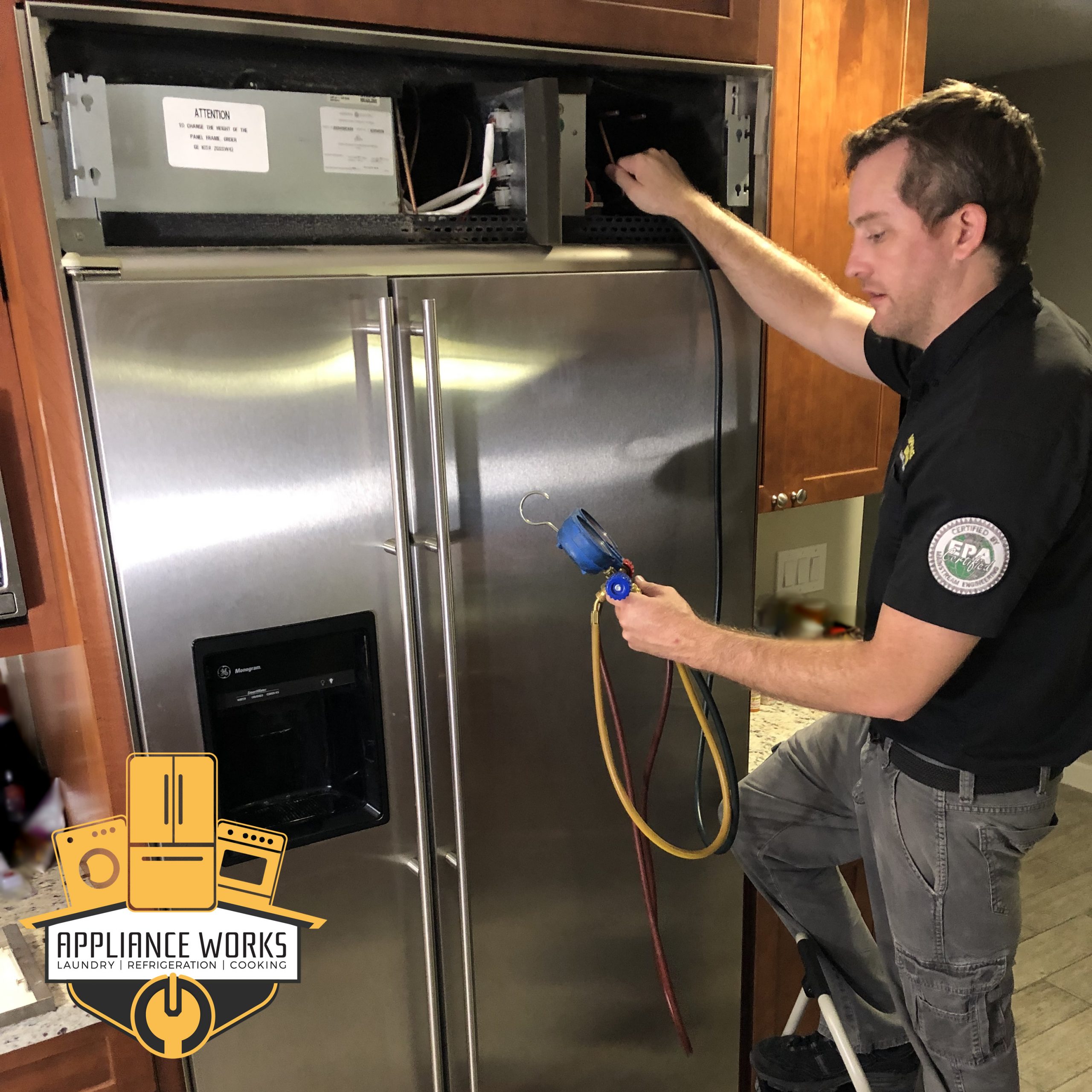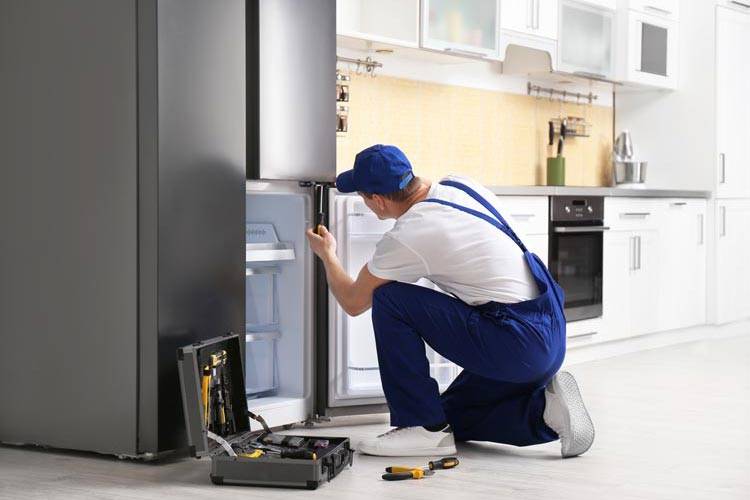Monthly Checkups from Subzero Repair Service Dependable Refrigeration & Appliance Repair Service Save You Thousands
Monthly Checkups from Subzero Repair Service Dependable Refrigeration & Appliance Repair Service Save You Thousands
Blog Article
The Ultimate Guide to DIY Appliance Repair Work Techniques
From refrigerators to dishwashing machines, comprehending how to troubleshoot and fix these gadgets can conserve you time and money. Are you all set to discover important strategies that will empower you to handle repairs confidently?
Recognizing Usual Home Appliance Problems
When you count on your home devices, it can be frustrating when they instantly stop functioning or act up. Comprehending common appliance troubles can assist you fix issues efficiently. For example, if your refrigerator isn't cooling down, check the temperature settings or examine the door seal for gaps. A malfunctioning cleaning maker could be because of a stopped up drainpipe filter or a busted belt.
If your oven isn't heating, damaged elements or thermostat concerns might be at fault. Dishwashers commonly experience troubles with drainage, so make certain the filter is clean and the drain pipe isn't kinked.
Also, pay attention for unusual noises; they often suggest mechanical concerns. By identifying these signs, you can save time and possibly avoid costly repair services. A little expertise goes a long way in preserving your home appliances, so remain educated to keep whatever running efficiently.
Necessary Tools for DIY Repair Works
Before diving into DIY device fixings, it is very important to gather the right devices to guarantee the process goes smoothly. Start with a good collection of screwdrivers, including both flathead and Phillips, as they're important for opening most home appliances. You'll likewise want a set of pliers for grasping and twisting cables or small parts.
Do not neglect a multimeter; it aids you test electrical components and diagnose concerns successfully. A socket set comes in handy for loosening or tightening bolts, while an utility knife can be valuable for opening or cutting cables packaging.
Finally, take into consideration having a flashlight available to illuminate dark rooms inside your appliances. With these vital tools, you'll be well-appointed to deal with numerous repairs, conserving both money and time. Collect your equipment and get ready to roll up your sleeves!
Safety First: Preventative Measures to Take
Prior to you begin any home appliance repair service, it's vital to prioritize security. Make certain you wear individual safety devices, detach the power source, and maintain your job location arranged. These straightforward preventative measures can aid avoid crashes and ensure a smoother repair procedure.

Personal Protective Tools
Safety gear is a crucial part of any type of DIY home appliance fixing project. You should always use security goggles to shield your eyes from dirt and debris. A sturdy set of gloves will secure your hands from hazardous products and sharp sides. Consider utilizing a mask if you're taking care of chemicals or dust, guaranteeing you take a breath securely while functioning. Steel-toed boots are likewise a clever selection, especially when raising heavy appliances. Do not neglect to put on long sleeves and pants to safeguard your skin from prospective injuries. By prioritizing individual safety tools, you'll significantly lower the threat of accidents and injuries. Remember, being prepared with the ideal equipment maintains you secure and concentrated on completing your repair work efficiently.
Source Of Power Interference
To guarantee a safe Do it yourself home appliance repair service, separating the power resource is important. This basic action avoids electric shocks and warranties that you can concentrate on the fixing without fretting concerning unintended activation. Once you're confident that the power is detached, you can with confidence continue with your repair work, understanding you have actually taken the needed precautions to safeguard on your own.
Workplace Company
A well-organized work location can make all the difference in your DIY home appliance repair service project. Begin by removing your workspace of mess to protect against mishaps and interruptions. A clean area not only improves effectiveness but likewise keeps you risk-free while you work on your appliance repair.
Step-by-Step Guide for Refrigerator Fixes
When your refrigerator starts breaking down, it can be irritating, but dealing with the trouble on your own can save you money and time. Unplug the refrigerator to assure safety. Look for typical concerns like temperature level changes or uncommon sounds. If it's not cooling, check the thermostat settings; they may be established expensive. Next, clean the condenser coils, which frequently collect dirt and particles. For a noisy refrigerator, examine the follower and verify it's not obstructed.
If there's water pooling inside, inspect the door seals for damages or dust, and clean them if required. As soon as you've resolved the issue, plug the refrigerator back in and monitor it for a couple of hours.
Fixing Washing Machine Problems
Just like refrigerators, cleaning visit their website equipments can present their own set of obstacles, yet many concerns can be settled with a little bit of troubleshooting. If your maker will not begin, check the power cable and verify it's plugged in.
If your clothing aren't getting tidy, think about the water level and cleaning agent kind; making use of excessive detergent can produce excess suds, influencing efficiency. For leaks, analyze the hoses for splits or loose connections. Tightening up these can usually solve the problem. Regular maintenance, like cleaning up the filter, can protect against several concerns from emerging. Bear in mind, a little troubleshooting goes a lengthy means in maintaining your washing maker running smoothly.
Repairing Ovens and Stoves
How can you fix typical concerns with your stove or cooktop? Beginning by checking the power supply.
If your stove isn't heating, check the temperature level settings and verify the door seals securely. If it's damaged., a faulty home heating aspect could additionally be the wrongdoer; you might need to change it.
For irregular food preparation, rotate your frying pans and consider making use of a stove thermostat to validate precise temperature levels. If you hear uncommon noises or odor gas, turn off the home appliance promptly and consult an expert. By following these steps, you can identify and deal with several usual oven and stove issues effectively.
Repairing Dishwashers Facilitated
When your dishwasher starts breaking down, it can be irritating, yet attending to common issues isn't as difficult as it seems. You'll find out detailed troubleshooting methods that will aid you determine the trouble, in addition to the necessary tools you'll require to take on repairs yourself. Let's make fixing your dishwashing machine a breeze!
Typical Dishwasher Issues
While dishwashers are made to make your life simpler, they can often run into common concerns that leave you feeling frustrated. One constant problem is poor cleaning performance; this commonly happens as a result of clogged spray arms or filthy filters. you can try here You might additionally see water pooling near the bottom, which can indicate a damaged drainpipe or a kinked tube. It could be a basic problem with the lock mechanism or door seal if your dishwashing machine's door will not latch. Furthermore, unusual noises can signal damaged elements or loosened parts. If you scent something odd, it could be time to examine for food particles or a malfunctioning motor. Addressing these issues early can save you time and trouble in the future (Emergency Sub-Zero Repair Dependable Refrigeration & Appliance Repair Service).

Step-by-Step Troubleshooting
Prior to diving right into repair work, it's essential to determine the specific concern your dishwasher is encountering. If it's not cleansing correctly, Start by checking. Inspect the spray arms for blockages and guarantee they spin openly. Examine door seals and hose pipes for any damages if it's dripping. For strange sounds, listen closely during cycles; foreign items could be embeded the filter or impeller. If your dishwasher won't start, inspect the power supply and door lock. Don't forget to consult your user guidebook for repairing tips particular to your version. By carefully addressing each possible problem, you can identify the problem and take the necessary steps to repair it, making your dish washer feature like brand-new again.
Crucial Repair Devices
When fixing your dish washer,Having the right tools at your disposal can make all the distinction. Start with a screwdriver set, as you'll frequently require both Phillips and flathead choices. A multimeter's necessary for detecting electric issues, while pliers can help you grip and control various parts. Do not neglect a pail or towels for any type of water splashes during fixings.
You might additionally want a degree to guarantee your dish washer's appropriately straightened. With these vital tools, you'll be fully equipped to tackle any type of dishwasher fixing obstacle that comes your method.
Regularly Asked Inquiries
Exactly how Do I Identify if a Home Appliance Is Well Worth Repairing?
To identify if a home appliance's worth repairing, consider its age, fixing prices, and present value. If repairs surpass half the substitute price, you could wish to purchase a brand-new model instead.
Can I Discover Replacement Components Locally for My Appliance?
Yes, you can typically find replacement parts locally for your appliance. Inspect equipment shops, home appliance service center, or local classifieds. Don't try this site fail to remember to bring the design number to ensure you get the proper component!
What Common Mistakes Should I Stay Clear Of When Repairing Home Appliances?
When repairing home appliances, stay clear of rushing with diagnostics, disregarding safety and security precautions, or using inaccurate devices. Do not skip checking out manuals or seeing tutorials; they give crucial guidance. Be patient and detailed to assure effective repair work and protect against further damage.
The length of time Does a Typical DIY Device Fixing Take?
A typical do it yourself home appliance fixing normally takes one to three hours, depending upon the intricacy. You'll intend to gather your products and tools initially, and adhere to instructions carefully to stay clear of unnecessary hold-ups.
Exist Any Warranties for Do It Yourself Appliance Repair Works?
When you deal with DIY appliance repair services, guarantees typically do not cover your job. Nonetheless, some makers might recognize guarantees for components you change. Constantly inspect your appliance's service warranty terms before starting any fixings to avoid concerns.
Before diving into DIY home appliance repair work, it's vital to collect the right devices to ensure the procedure goes smoothly.Prior to you start any kind of home appliance repair, it's vital to focus on safety.To assure a secure DIY appliance repair work, separating the power source is essential.A well-organized job area can make all the difference in your Do it yourself device fixing project. Always inspect your appliance's warranty terms before starting any kind of repair work to stay clear of problems.
Report this page